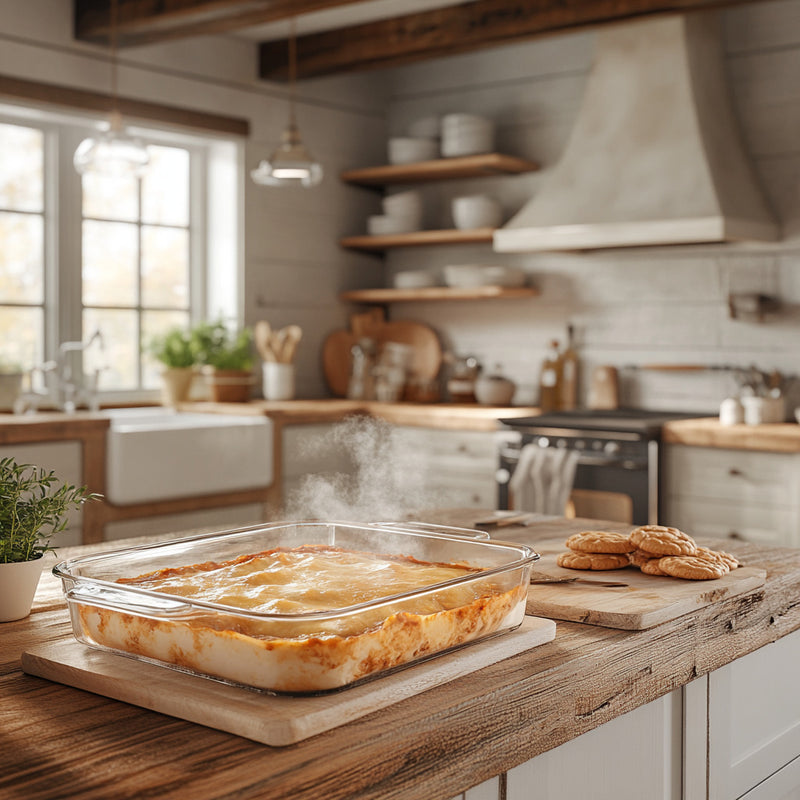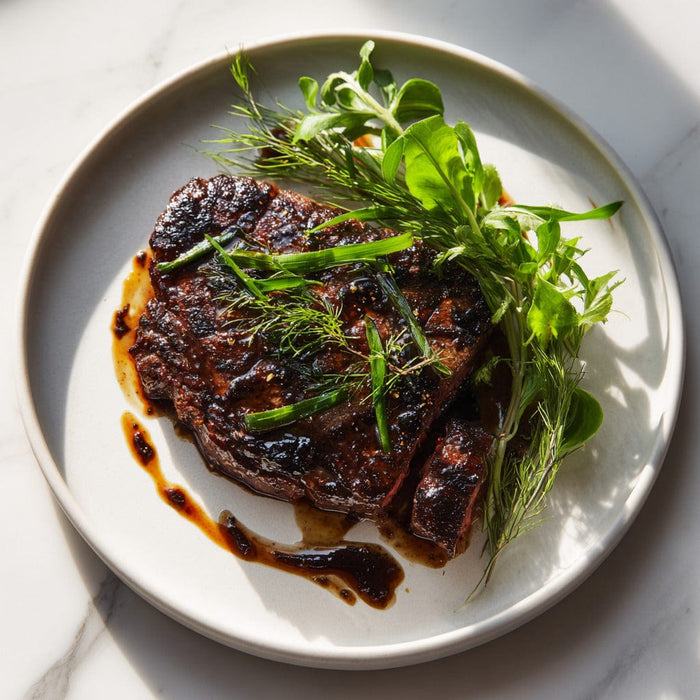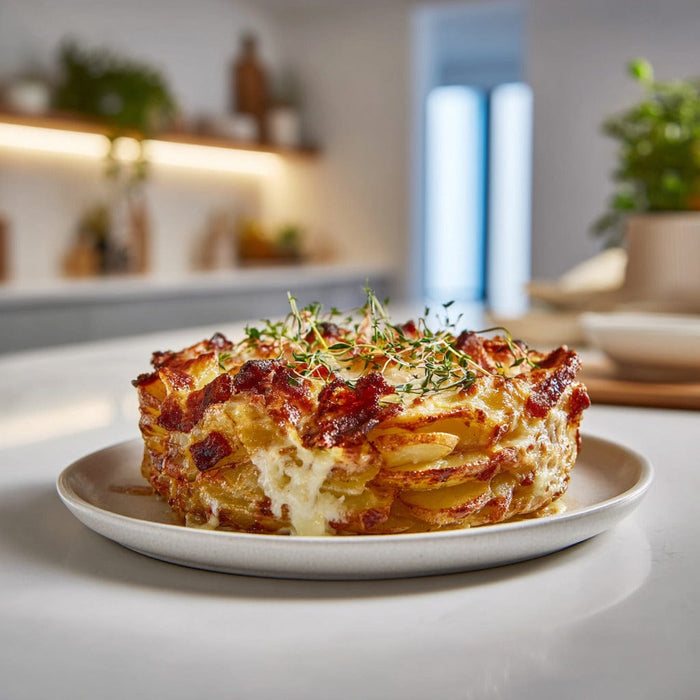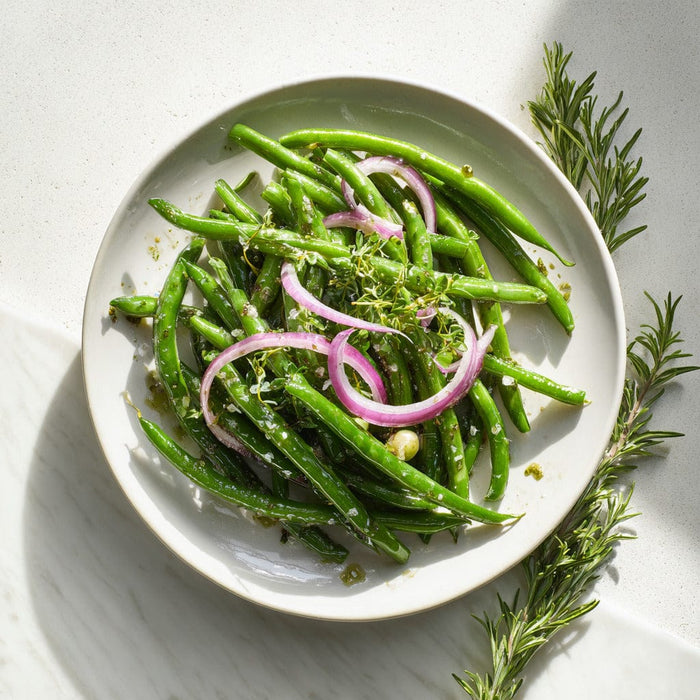
Choosing Between Glass and Metal Bakeware: A Culinary Guide
As you step into your kitchen, the aroma of freshly baked goods fills the air, and the anticipation of indulging in your creations is palpable. But have you ever paused to consider the bakeware you’re using? The choice between glass and metal bakeware can significantly impact the outcome of your culinary endeavors. In this guide, we’ll explore the pros and cons of each material, helping you make an informed decision that will elevate your baking game.
Understanding Metal Baking Pans: The Professional’s Choice
Metal baking pans have long been the go-to for professional bakers, and for good reason. Their ability to conduct heat efficiently and evenly makes them ideal for achieving that perfect golden-brown crust on cookies, cakes, and more.
Why Metal is Generally Preferred:
- Heat Conduction & Even Baking: Metal pans heat quickly and distribute heat evenly, helping baked goods develop the golden brown color and crisp edges that many recipes aim for.
- Variety of Options: Dark metal pans heat faster than light-colored ones, offering flexibility for recipes where browning and speed are crucial, like cookies or brownies.
- Durability: Metal pans withstand high heat and won’t break like glass, making them highly resilient.
Drawbacks of Metal:
- Potential Warping: Thin metal pans can warp if exposed to sudden temperature changes, like plunging a hot pan into water.
- Sensitivity to Cleaners: Harsh, abrasive cleaners can scratch metal pans over time, shortening their lifespan.
Pro Tips for Metal Bakeware:
- Allow the pan to cool fully before washing to avoid warping.
- Stick with non-abrasive cleaning methods to preserve the coating.
Exploring Glass Baking Pans: Transparency and Heat Retention
Glass baking pans offer a unique set of advantages that can be particularly beneficial for certain recipes. Their aesthetic appeal and heat retention properties make them a favorite for many home cooks.
Why Glass Pans Still Have Value:
- Heat Retention: Glass heats slowly but retains heat well, making it ideal for dishes that benefit from even, prolonged heating—think casseroles, bread puddings, or baked custards.
- Reactivity with Acids: Unlike aluminum, glass won’t react with acidic ingredients like tomatoes or citrus, ensuring clean and unaltered flavors.
- Aesthetic Appeal & Monitoring: Glass is perfect for layered desserts or recipes where monitoring the crust, such as pie, is essential. It also keeps dishes warm for serving.
Drawbacks of Glass:
- Slow, Uneven Heating: Glass is not the best choice for recipes that rely on browning, like cookies or biscuits, as it lacks the ability to heat quickly or evenly distribute heat.
- Fragility: Glass bakeware can shatter when subjected to abrupt temperature changes or excessive heat beyond what it’s rated for.
Pro Tips for Glass Bakeware:
- Always preheat the oven before placing the glass pan inside to avoid sudden temperature stress.
- Never go straight from the fridge or freezer to the oven.
- Allow glass pans to cool on a rack—not directly on a counter—before washing.
When to Substitute Glass for Metal
Sometimes, you may find yourself missing one or the other. Here’s what to know:
- Swapping Glass for Metal: Lower the oven temperature by 25°F and extend the bake time by 5-15 minutes. Be vigilant in checking for doneness.
- Swapping Metal for Glass: Avoid using uncoated aluminum or cast iron for highly acidic recipes. Stick with stainless steel instead.
Key Takeaways from the Experts
Expert pastry chef Jürgen David emphasizes that metal bakeware should be your go-to choice unless a specific recipe calls for glass or ceramic. Metal’s ability to evenly cook and brown foods while avoiding fragility makes it the most versatile option for baking. Glass, however, shines in specific applications (like casseroles or fruit-based desserts) and adds style to serving presentations.
So, if you’re equipping your kitchen with minimal bakeware, opt for metal pans. Glass can work in many situations, but it requires extra attention to temperature changes and cooking times due to its slower heat conduction.
TL;DR Summary:
- If you prioritize speed, even browning, and resilience, go with metal bakeware.
- For dishes needing steady heat retention or for serving aesthetics, use glass—just mind its fragility and heat sensitivity.
- Stick to the material recommended in recipes for best results, and adjust cooking time/temperature if substituting.
Following these guidelines will ensure success, whether you're baking tender brownies, flaky pies, or an ooey-gooey lasagna!




